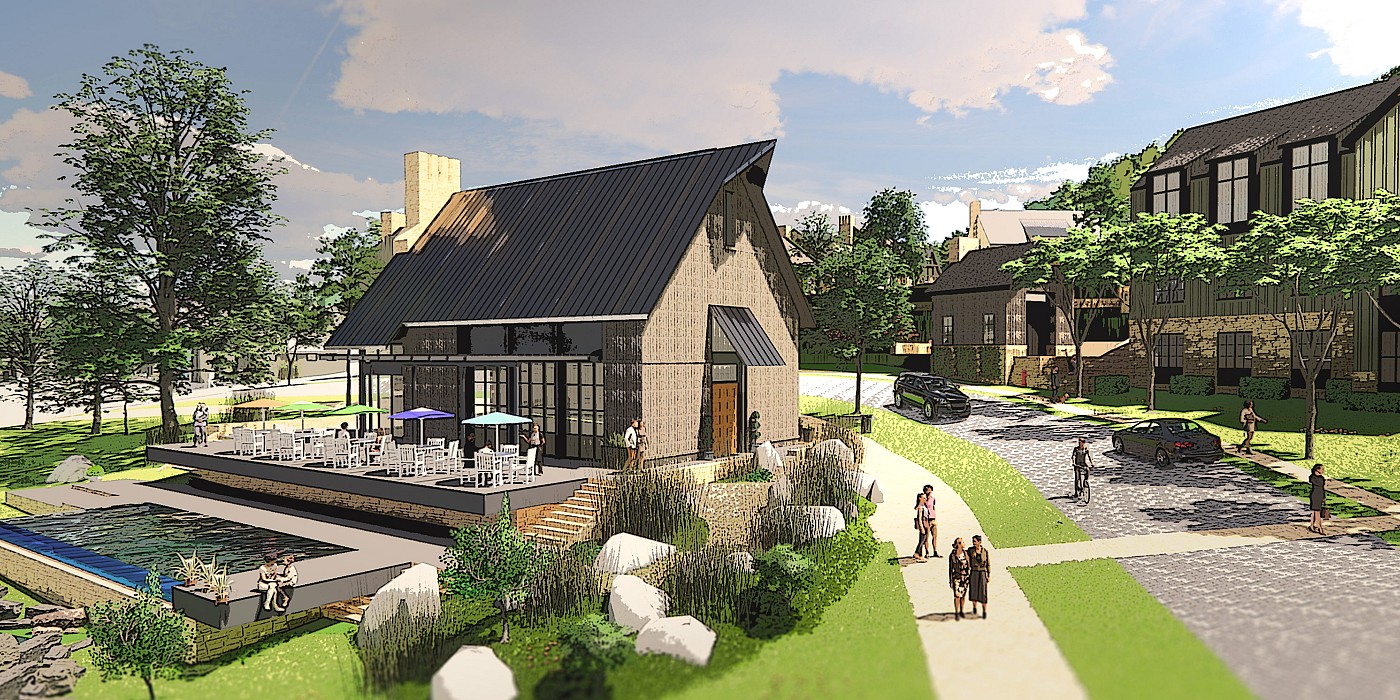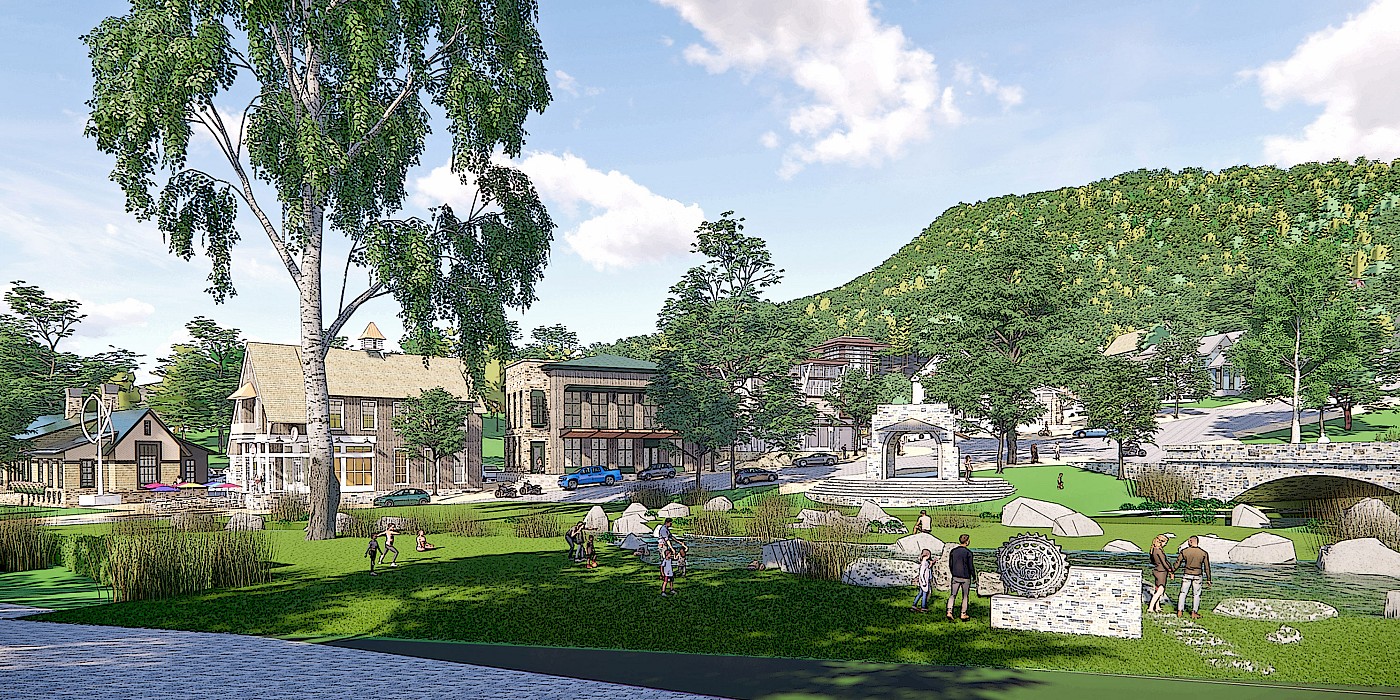- You have not saved any projects.
Camp Creek Vision Plan
For the Eastern Band of Cherokee Indians (EBCI) Housing Division in western North Carolina, Shook Kelley engaged the people of the Cherokee to dig deep into tribal culture, evaluate opportunities and prepare a vision for a master plan and design – for the main objective of providing quality housing opportunities for both its enrolled members and workforce on their 188-acre Camp Creek site in Jackson County.




The Eastern Band of Cherokee Indians (EBCI) is a sovereign nation with over 15,000 enrolled members. The Federally recognized tribe is located in the namesake town of Cherokee, North Carolina in the Qualla Boundary — a land trust made up of an area of their original territory, set within the Great Smoky Mountains. The remarkable legacy of the Cherokee nation is one that reflects a people with tremendous strength of character even in the face of great conflict. They have always held true to their robust values and deeply rooted principles, revolving around a deep reverence for the natural world and the connection with it, living as a tight community and supporting the good of the tribe.
Shook Kelley was hired by the EBCI's Housing Division to assist in shaping what their undeveloped 188-acre Camp Creek site might look like as a functioning community, incorporating both housing for the enrolled members and workforce housing. The mission of the Housing Division is to provide all tribal members with a foundation for success in life through the basic right of quality and affordable housing opportunities while promoting self-sufficiency, community revitalization, long-term economic success and sustainable quality of life. Currently, the tribe is also short of its housing needs for the current workforce demand. To quote EBCI Principal Chief Richard G. Sneed: “This project represents the single greatest leap in housing for our enrolled members in a very long time.” For a Native American people that invented its own written language, resisted deportation in the 19th Century, hid in the mountains until a deal was struck to buy back its land, and then subsisted until they leveraged gaming and tourism in a superior way to establish a sustainable income, this a bold statement.
It is true, even when held up to the scrutiny of history. Providing economic security can be a hollow victory without also preparing living environments that nurture people while also protecting the land. Few entities possess such a growing economic engine as a casino and hotel businesses (and soon to be adventure park), one that depends upon a labor model that has average salaries in the $30K range, and that is isolated within a pristine wilderness, away from urban labor pools. So, it is in the tribe's economic interest to undertake the development of this new community. However, there is a deeper, parallel narrative, one that speaks to the core of the Cherokee people, the love of culture and the land which is so much a part of it. As compelling as the casino & entertainment market is, there is an existing market for those who are simply seeking nature. This market is growing as Millennials make their way into adulthood, seeking genuine expressions of nature and forming bonds with those that conserve it. And, as they are proving in their support of consumer brands, they can judge harshly those that are not genuine, and support those that are in alignment with their values and view of the world. This is a consumer “mountaintop” that the Cherokee can and should own.
This development will be the first step along that path, creating a sustainable residential community that not only secures a business model that undergirds the nation, but in a manner that reflects its values, culture and humanity of the people.
A site analysis study was prepared ranging from land surveys, zoning, soils and wetlands, scenic views and transportation, among others, forming the basis for the planning. Interviews, surveys, and site visits to other regional communities were conducted with stakeholders to gauge their perspectives on various housing typologies, heritage, stewardship of the land, and possible planning schemes for the Camp Creek development. Organizing Principles were drafted by Shook Kelley to serve as pathways to guide and measure the preparation of a plan and the development process. From this, a series of Alternative Future scenarios were drafted in various scales of development, ranging from maximum balance of housing typologies throughout the site; a westward shift scenario whereas the bulk of larger scale apartments would be on the west side of the site but also with the most number of residential units throughout; a smaller scale scenario with fewer total units featuring walk-Up apartments terraced up a hill on the west portion, and courtyard style housing on the east portion of the site; and a lighter footprint scenario with the lowest number of residential units featuring terraced courtyard housing and cottages on the east end. Ultimately, a Vision Plan was prepared that blends both affordable and market rate housing among a total of 445 residential units, a village center and a neighborhood center that will feature other uses within each.
Next steps for the project include additional site surveys, off-site utility right-of-way acquisition and engineering and the implementation of Phase I, which includes a variety of product types.
The Eastern Band of Cherokee Indians (EBCI) is a sovereign nation with over 15,000 enrolled members. The Federally recognized tribe is located in the namesake town of Cherokee, North Carolina in the Qualla Boundary — a land trust made up of an area of their original territory, set within the Great Smoky Mountains. The remarkable legacy of the Cherokee nation is one that reflects a people with tremendous strength of character even in the face of great conflict. They have always held true to their robust values and deeply rooted principles, revolving around a deep reverence for the natural world and the connection with it, living as a tight community and supporting the good of the tribe.
Shook Kelley was hired by the EBCI's Housing Division to assist in shaping what their undeveloped 188-acre Camp Creek site might look like as a functioning community, incorporating both housing for the enrolled members and workforce housing. The mission of the Housing Division is to provide all tribal members with a foundation for success in life through the basic right of quality and affordable housing opportunities while promoting self-sufficiency, community revitalization, long-term economic success and sustainable quality of life. Currently, the tribe is also short of its housing needs for the current workforce demand. To quote EBCI Principal Chief Richard G. Sneed: “This project represents the single greatest leap in housing for our enrolled members in a very long time.” For a Native American people that invented its own written language, resisted deportation in the 19th Century, hid in the mountains until a deal was struck to buy back its land, and then subsisted until they leveraged gaming and tourism in a superior way to establish a sustainable income, this a bold statement.
It is true, even when held up to the scrutiny of history. Providing economic security can be a hollow victory without also preparing living environments that nurture people while also protecting the land. Few entities possess such a growing economic engine as a casino and hotel businesses (and soon to be adventure park), one that depends upon a labor model that has average salaries in the $30K range, and that is isolated within a pristine wilderness, away from urban labor pools. So, it is in the tribe's economic interest to undertake the development of this new community. However, there is a deeper, parallel narrative, one that speaks to the core of the Cherokee people, the love of culture and the land which is so much a part of it. As compelling as the casino & entertainment market is, there is an existing market for those who are simply seeking nature. This market is growing as Millennials make their way into adulthood, seeking genuine expressions of nature and forming bonds with those that conserve it. And, as they are proving in their support of consumer brands, they can judge harshly those that are not genuine, and support those that are in alignment with their values and view of the world. This is a consumer “mountaintop” that the Cherokee can and should own.
This development will be the first step along that path, creating a sustainable residential community that not only secures a business model that undergirds the nation, but in a manner that reflects its values, culture and humanity of the people.
A site analysis study was prepared ranging from land surveys, zoning, soils and wetlands, scenic views and transportation, among others, forming the basis for the planning. Interviews, surveys, and site visits to other regional communities were conducted with stakeholders to gauge their perspectives on various housing typologies, heritage, stewardship of the land, and possible planning schemes for the Camp Creek development. Organizing Principles were drafted by Shook Kelley to serve as pathways to guide and measure the preparation of a plan and the development process. From this, a series of Alternative Future scenarios were drafted in various scales of development, ranging from maximum balance of housing typologies throughout the site; a westward shift scenario whereas the bulk of larger scale apartments would be on the west side of the site but also with the most number of residential units throughout; a smaller scale scenario with fewer total units featuring walk-Up apartments terraced up a hill on the west portion, and courtyard style housing on the east portion of the site; and a lighter footprint scenario with the lowest number of residential units featuring terraced courtyard housing and cottages on the east end. Ultimately, a Vision Plan was prepared that blends both affordable and market rate housing among a total of 445 residential units, a village center and a neighborhood center that will feature other uses within each.
Next steps for the project include additional site surveys, off-site utility right-of-way acquisition and engineering and the implementation of Phase I, which includes a variety of product types.
